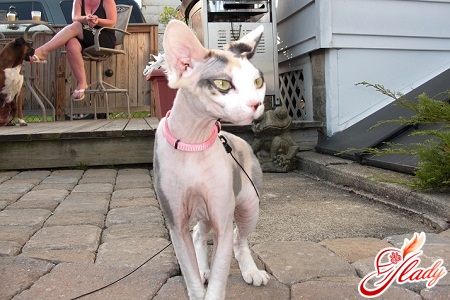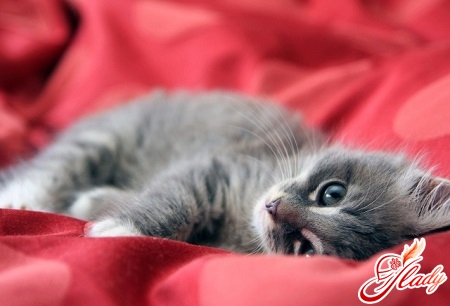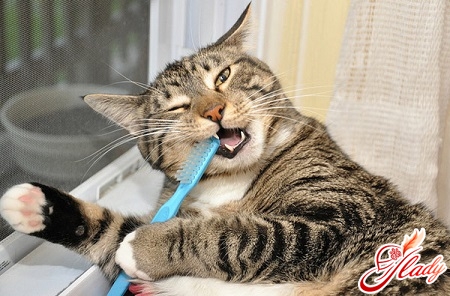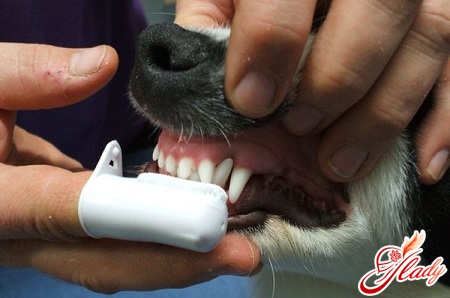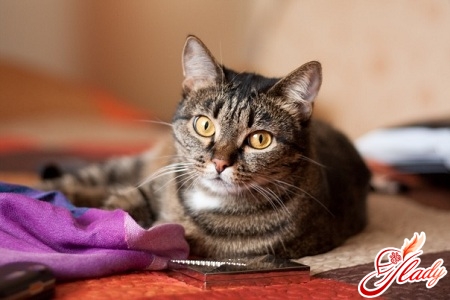
It is generally accepted that cats rarely get sick.And if they are sick, then it is quite easy to cure them. This is partly true: cats are actually capable of self-healing. However, there are diseases that cannot be cured on their own. For example, a cat with asthma cannot be completely cured, but the animal's condition can and should be alleviated. Therefore, treatment of this disease requires not only the intervention of a veterinarian, but also competent care of the animal.
Causes of the disease
Unfortunately, the causes of such a disease asbronchial asthma in cats, remain unclear to the end. However, it is possible to say for sure that the disease is allergic, and the decisive factor is genetic predisposition. Therefore, most often cats suffering from bronchial asthma are found among Siamese and Himalayans. But the age of the animal or its gender do not play any role here. Nevertheless, like any allergic diseases, asthma has its own "provocateurs". The following are among the reasons that provoke attacks and exacerbations of the disease:
- acute respiratory infections,
- dust,
- contaminated air,
- tobacco smoke,
- emotional stress,
- pollen of plants,
- chemical evaporation.
However, any diseases of the upper respiratory tractpathways and any air pollution can become predisposing factors. And here it is very important to recognize asthmatic symptoms in time in order to contact a veterinarian and help the animal.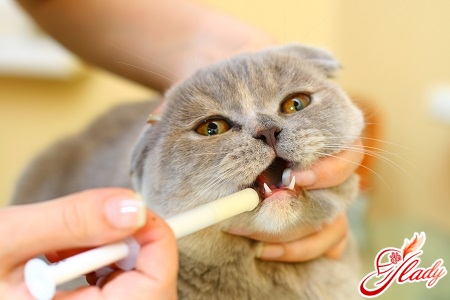
Symptoms and First Aid
Asthma attacks are characterized by spasms of the bronchi andshortness of breath when exhaling. This is caused by pathology of the mucous membrane, the appearance of ulcers and erosions on it, excess viscous mucus, swelling and inflammation, as well as hypertrophy of the smooth muscles of the bronchi. In cats, as in humans, this is expressed in difficulty breathing, accompanied by wheezing and whistling. A cough may appear, creating the impression that the animal has something in its throat. In this case, the cat sits down, stretches its neck, opens its mouth and begins to take quick intermittent breaths in and out. This is what the symptoms of a direct attack of bronchial asthma in cats look like. But you should also pay attention to other symptoms that should alert you:
- fast fatigue after physical exertion;
- whistling sounds during breathing;
- shallow and frequent breathing;
- The bent back and the extended neck in a sitting position.
However, difficulty breathing occurs not onlywith asthma. Therefore, it is impossible to make a diagnosis based only on these symptoms. However, at the first similar symptoms, you should immediately contact a veterinarian. If this happens on holidays or in the evening, you must call an ambulance veterinary. In any case, you cannot leave things to chance - the attack will not go away on its own, the animal needs help. But you do not need to panic either. An asthma attack sometimes looks frightening, and the animal itself is frightened of this condition - there is a feeling of inability to breathe. Therefore, the cat becomes afraid, the animal may begin to rush about or, on the contrary, fall into a state of numbness. Your task is to calm the animal. Under no circumstances try to catch the cat and stuff it into a carrier. Remember that at this moment your pet does not feel the best, it is weakened, and careless handling and excessive excitement will only worsen its condition.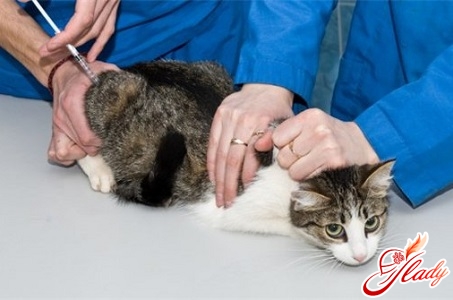
Treatment of bronchial asthma
After the veterinary clinic isyour cat has been diagnosed with asthma, the doctor will prescribe treatment. Remember that asthma cannot be cured completely. Therefore, the whole point of treatment is to reduce the frequency and duration of attacks until they are completely stopped. Asthma in cats is usually treated in the same way as in humans - with glucocorticosteroids to relieve bronchial inflammation and beta2-adrenergic agonists to stop attacks. Of course, the doctor will determine the severity of the disease and, depending on this, prescribe the appropriate treatment. But it will not hurt you to know that there are several treatment options.
As a rule, treatment is by inhalationcombined with taking tablets. The fact is that inhalation drugs begin to act approximately 2-4 weeks after the start of treatment. Therefore, at the initial stage, treatment is provided by tablets, and in severe cases - injections. In addition to drug treatment, a cat with asthma is shown a calm lifestyle, the absence of stressful situations. Remember that the most harmless at first glance changes in the cat's usual emotional background can provoke asthma attacks: a change of residence, guests, the appearance of small children or other animals in the house. To calm an agitated animal, veterinarians advise using a special flower essence. This sedative can be dripped directly into the cat's mouth or a few drops can be applied to the inside of the ear, and then rubbed in. Such drugs can be used every 15 minutes until the animal is completely calm.
Useful advice to owners
Of course, it is necessary to treat the animal.But do not neglect basic hygiene rules - this will help cope with the illness of your beloved cat or, at least, reduce the frequency and duration of attacks. Therefore, do systematic wet cleaning in the house. During the heating season, try to use humidifiers and use a vacuum cleaner with a water filter. Ventilate the apartment, do not smoke indoors, refuse indoor plants that can provoke an allergic reaction. Use clumping products as a filler for the cat's toilet. In no case pour fillers based on chalk or clay into the tray, and even better - transfer your cat to a tray with a grate. And most importantly - take care of your pet, be affectionate and patient with it. Remember that we are responsible for those we have tamed.




